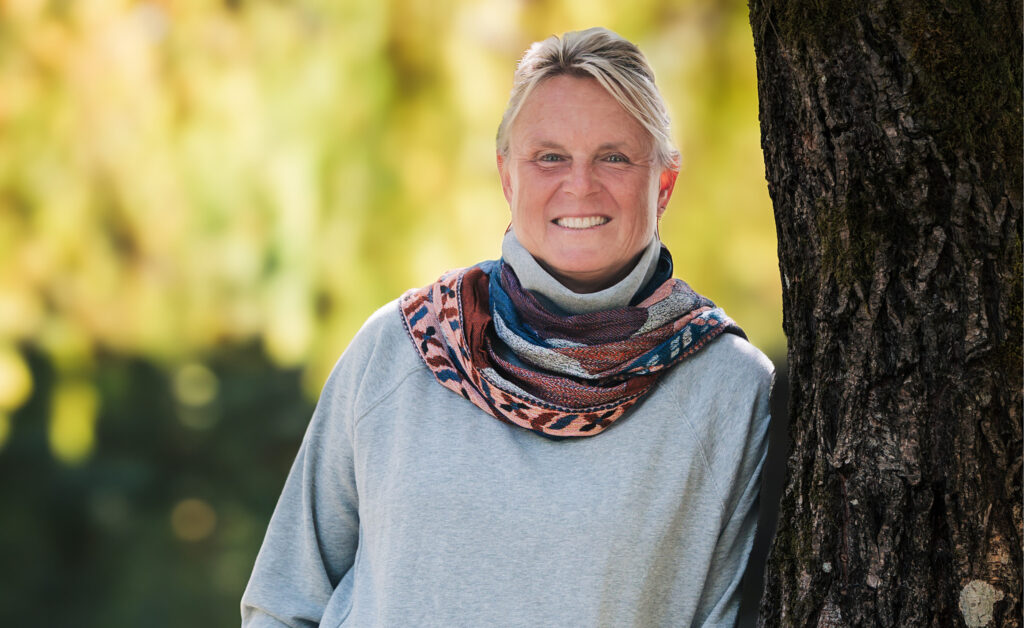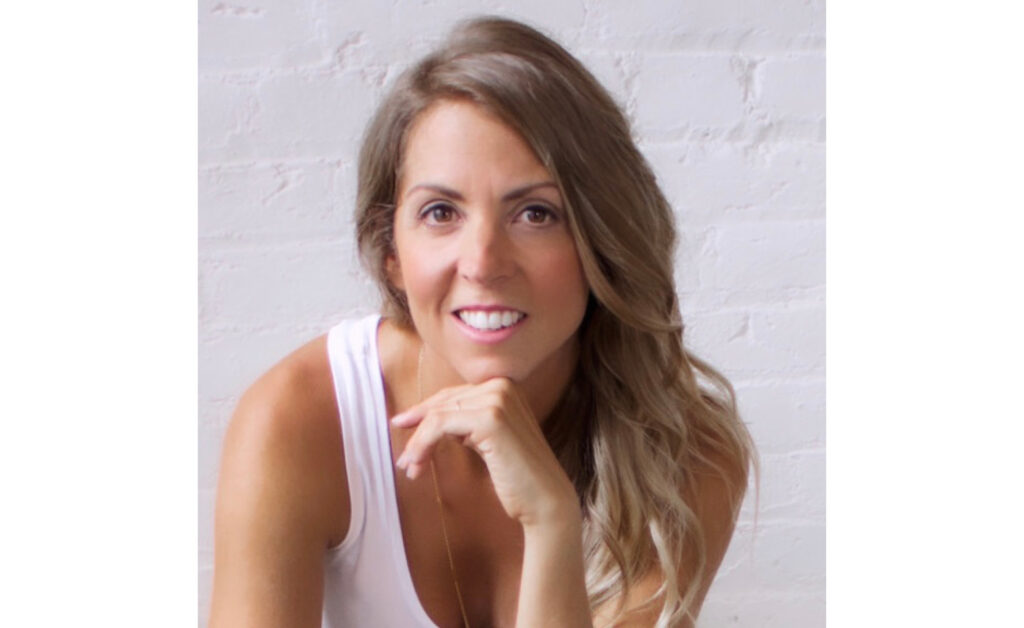by Karen Elgersma | photo by Janis Jean Photography –
Sylvia Olsen (PhD) is an author and a storyteller who has extensive knowledge of First Nations housing program development. Dr. Olsen is also an adult educator and trainer who co-created and teaches the First Nations Housing Managers’ Program at Vancouver Island University. As an experienced researcher, she completed her PhD with a focus on government housing in First Nations. Sylvia is also an avid knitter, mom, grandma and wife. It was pure joy to sit across from her on a log in Centennial Park, listen to her story and understand why the work she did with Indigenous Housing was the most important work of her life.
You were born and raised in Victoria and then you married a Coast Salish man and moved to W̱JOȽEȽP, Tsartlip First Nation, where you lived for 35 years and raised your family. Share with us what that experience was like and how it influenced you.
I was only 17 years old so it was like a full-life immersion into a completely different Canadian reality. I was faced very early with the question “How can this be in Canada, the country that’s supposed to be the best in the world, and yet you just have to cross the street and you go from such privilege to such poverty?” It’s a question that I’ve struggled with for close to 50 years.
As a storyteller and author you have published 20 books – tell us about your first book “No Time to Say Goodbye: Children’s Stories of Kuper Island Residential School” in 2001?
My sister-in-law, Diane Harris, from Stz’uminus First Nation, was a social worker there in the late 80s. She told me that things went on at Kuper Island Residential School that her clients only talked about in secret. Both her parents went there and she worried that they had suffered at the school. She wanted to talk to ex-students to find out why so many were so troubled. In those days no one was talking about the schools. She convinced me to tag along with her to write down what the people said.
The stories changed my life. The people pointed their fingers at me and said the only reason they were telling me anything was because they wanted me to write it down and tell the world. It was a desperately heavy responsibility and one I took very seriously. It took years and with the help of Rita Morris and Ann Sam, from Tsartlip, I finally was able to write No Time to say Goodbye. I wasn’t a writer so on many fronts the book was excruciating to write and terrifying to publish because it was at a time when so few residential school stories were being told.
On your blog you wrote “I eat and sleep housing. Working on housing can never stop, not until everyone has a safe, life-affirming place to be and become.” What did you discover through your research during your PhD around First Nations housing?
In two sentences. One: Government-controlled housing, for a racially defined population, for almost a century, that denies access to common financing tools so people can house themselves, does not work. And two: The outcome of that housing system is severe social disintegration that rivals the devastating effects of residential schools.
You shared with me that you can tell who a person is by seeing where they live. What do you mean by this and how has this discovery impacted your passion for housing independence for First Nations?
Most Canadians know very little about First Nations other than what they see, and housing is the most significant visible aspect of First Nations communities. First Nations housing has been extremely substandard when compared to their neighbours so Canadians have made very negative connections. The thing that Canadians don’t know is why First Nations housing is so different.
I remember 35 years ago talking to my friend, who is First Nations, and she told me about her passion for self-government and how it was imperative if B.C. First Nations were going to thrive and grow. Why has it taken so long for this to happen and what damage has been done as a result?
Government does not know how to get out of the way. Bureaucracies only know how to perpetuate themselves. But at the heart of it all is systemic racism. Canada has never believed that First Nations people can manage themselves without “help.” As one housing program failed, government designed another one with even more oversight. It seems almost inconceivable to government that the problem is not and never was the First Nations’ ability to deliver the programs but the problem was and is the programs themselves. First Nations can manage themselves. The problem is that Canada still doesn’t believe it.
“Growing Up Elizabeth May, The Making of an Activist” will be coming out soon – a book you helped write for the young adults – what inspired you to be part of this project?
Jean Jordan, a long-time friend from Sidney, phoned me one day and said, “Sylvia, Elizabeth has been an activist since she was a tiny girl. We need to write her story for kids.” What she meant by that was that I needed to write it. I said yes, of course, but then I could not find the story. It seemed like Elizabeth was never a child. It wasn’t until Cate, Elizabeth’s daughter, partnered with me that the story unfolded. We worked with the wonderful Shauna White and her grade seven class at Bayside Middle School to help tell the story. It became a wonderful celebratory experience of family, women and an extreme desire to care for the planet.
You are also a knitter (yes the sweater Sylvia is wearing in the photos is her creation) and your book “Unravelling Canada” is about to launch – share with us what it is about.
Unravelling Canada is my first travel book. It’s about the knitting road trip Tex (my husband) and I took that started in Victoria and ended up in St John’s Newfoundland six weeks later. It was epic. I did about 60 workshops along the way that were a combination of storytelling and knitting instruction. When I got home I realized that the whole trip was a story I needed to tell. Circling back to your first question, the road trip gave me the opportunity to explore my thoughts and feelings about my country. The book is not as deeply analytical as I tend to be about the topic of belonging because it’s a road trip and the wheels keep turning. It is a drive through of the stunning Canadian natural landscape and of the historical, social and personal issues that emerged along the way.
You have left an incredible legacy with the work you have done with First Nations housing – what thoughts can you share with the people who live and work on the Saanich Peninsula who want to be part of the solution?
If the fix to any problem is to be real it must be as intense, thorough and profound as the problem itself. The history of racism towards First Nations in this country is so deeply rooted, so in our blood as to be almost invisible to us. Its effects have been so devastating for so long that it has, to our shame, become our normal. We need to peel off one layer after the other to get to the core of what racism is and what it means to us personally and, as importantly, to us as a society. We must be persistent and patient with each other. Canada is finally growing itself up. We haven’t been the good guys we thought we were. We don’t like some of the things we are seeing. It’s awkward and often uncomfortable. But self-awareness is never bad. As First Nations regain their place in this country, where they were and always should have been, we will all be better for it.
What’s next for Sylvia Olsen?
am shifting out of the front line work in housing and teaching. There are so many brilliant younger people pushing beyond what I have imagined. I will continue writing. My next project is to write my PhD dissertation into a book. It’s a huge undertaking. I’ve been avoiding it. Just thinking about it makes me slightly nauseated. Of course, more knitting. I work with my daughter Joni in her business Salish Fusion, which she intends to get up and running again in the next year. I’ll be there to help her. And time with my children, grandchildren, Tex and Piper our dog. And … more thinking, more loving, more compassion … .




